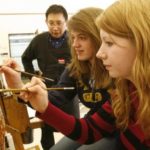Differentiating instruction is not a new approach to bridging the varying learning styles of students with different backgrounds and learning abilities. For years, educators have strategized how to differentiate instruction in math, ELA, and science. Countless articles and books offer best practices for differentiation in those subjects, but comparatively, very little has been written about differentiating computer science instruction.
I believe computer science is more important than ever. In the age of artificial intelligence, the study of computers and computational systems—including their theory, design, development, and application–represents a new frontier in science.
New fields in computer science seem to emerge each day and now include computer systems and networks, security, database systems, human computer interaction, vision and graphics, numerical analysis, programming languages, software engineering, bioinformatics, and theory of computing.…Read More



